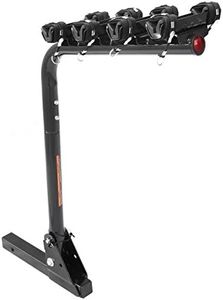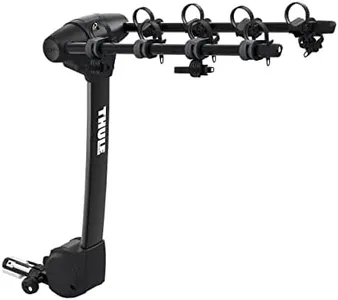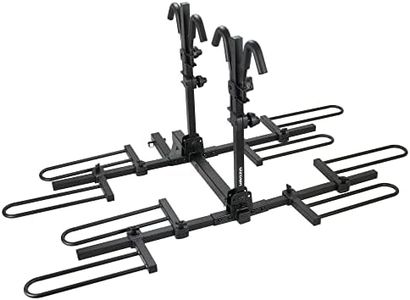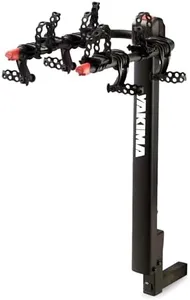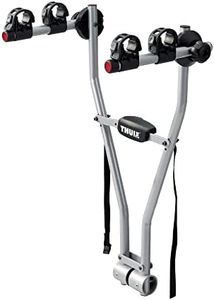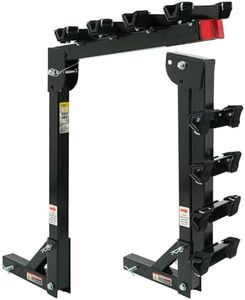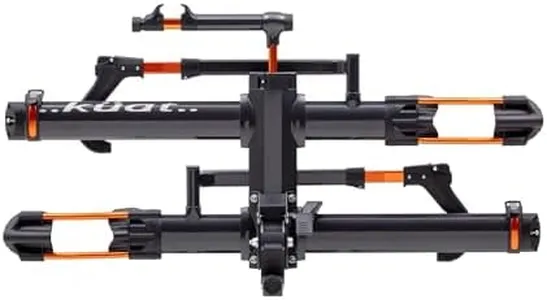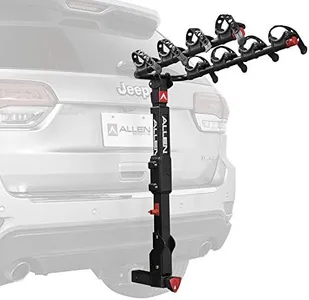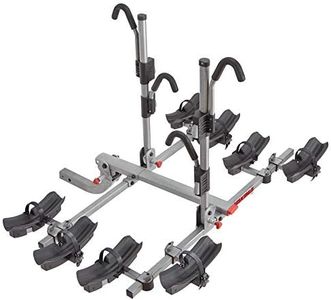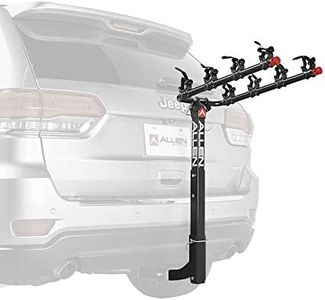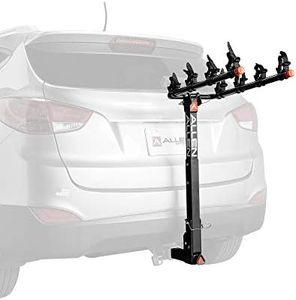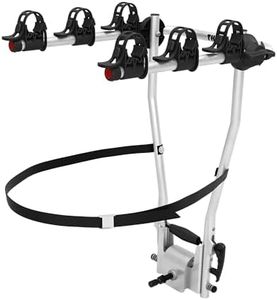We Use CookiesWe use cookies to enhance the security, performance,
functionality and for analytical and promotional activities. By continuing to browse this site you
are agreeing to our privacy policy
10 Best 4 bike hitch racks
From leading brands and best sellers available on the web.Buying Guide for the Best 4 bike hitch racks
Choosing a 4-bike hitch rack is a great way to transport multiple bikes safely and conveniently, whether you’re heading out for a family adventure or a group cycling trip. There are a lot of options on the market, and understanding the main differences between them will help you make the right choice for your needs. Take into account your vehicle type, the bikes you plan to carry, and how often you’ll use the rack, then match the features to those requirements.Type of Mount (Platform vs. Hanging)This refers to how the rack holds the bikes. Platform racks support bikes under the wheels, providing excellent stability and frame protection, which is great if you have heavy, oddly-shaped, or fragile frames. Hanging racks suspend bikes by the frame’s top tube and tend to be lighter and easier to store, but they may not fit certain bikes like full-suspension mountain bikes or step-through frames very well. Platform mounts are a better choice for frequent or long-distance travel and versatility among bike types, while hanging racks may suit casual users with standard bikes.
Hitch Receiver Size CompatibilityYour vehicle’s hitch receiver — the part the rack attaches to — comes in different sizes, usually 1.25-inch or 2-inch. It’s important to match the rack to your receiver size or choose a rack that includes adapters. Most 4-bike racks require a 2-inch receiver for strength and stability. If you’re unsure, check your vehicle specs or consult your vehicle’s manual. Always ensure the rack is compatible to ensure a secure fit and safe transport.
Weight CapacityThis is the maximum combined weight the rack can safely carry, typically listed per bike and as a total. Light racks may handle 35-40 lbs per bike, while sturdier ones can go up to 60 lbs each. Consider the weight of your bikes, especially if you’re transporting e-bikes or fat bikes, which are heavier than road or kids’ bikes. Pick a rack that comfortably supports your heaviest bike, with some margin for safety.
Bike CompatibilityNot all racks fit all bikes equally well. Check the rack’s ability to handle various frame sizes, tire widths, and wheel diameters. Some racks accommodate fat tires, kids’ bikes, and unusual frames, while others need adapters or are only suited for standard bikes. Think about the types of bikes your group will use most often to ensure a hassle-free loading and unloading experience.
Ease of Loading and AccessThis concerns how simple it is to mount and remove bikes from the rack, and whether you can access your vehicle’s trunk or rear hatch while the rack is loaded. Platform racks tend to be easier for lifting heavy bikes, and some have tilt or swing-away features for easy trunk access. If you need frequent access to your car’s rear or want to minimize lifting, prioritize this feature.
Security FeaturesSecurity features include locks for both the bikes and the rack itself. Integrated locking cables or hitch locks deter theft and add peace of mind, especially if you leave the bikes in a parking lot or at a trailhead. If security is important to you, look for racks with built-in locks or compatibility with aftermarket locks.
Rack Weight and StorageRacks themselves can be heavy and bulky, affecting ease of installation and removal. Lightweight racks are easier for a single person to handle, but heavier racks tend to be sturdier. Some racks also fold up or disassemble for storage. Consider how often you’ll remove the rack from your car and if you have space at home or in your garage to store it when not in use.
